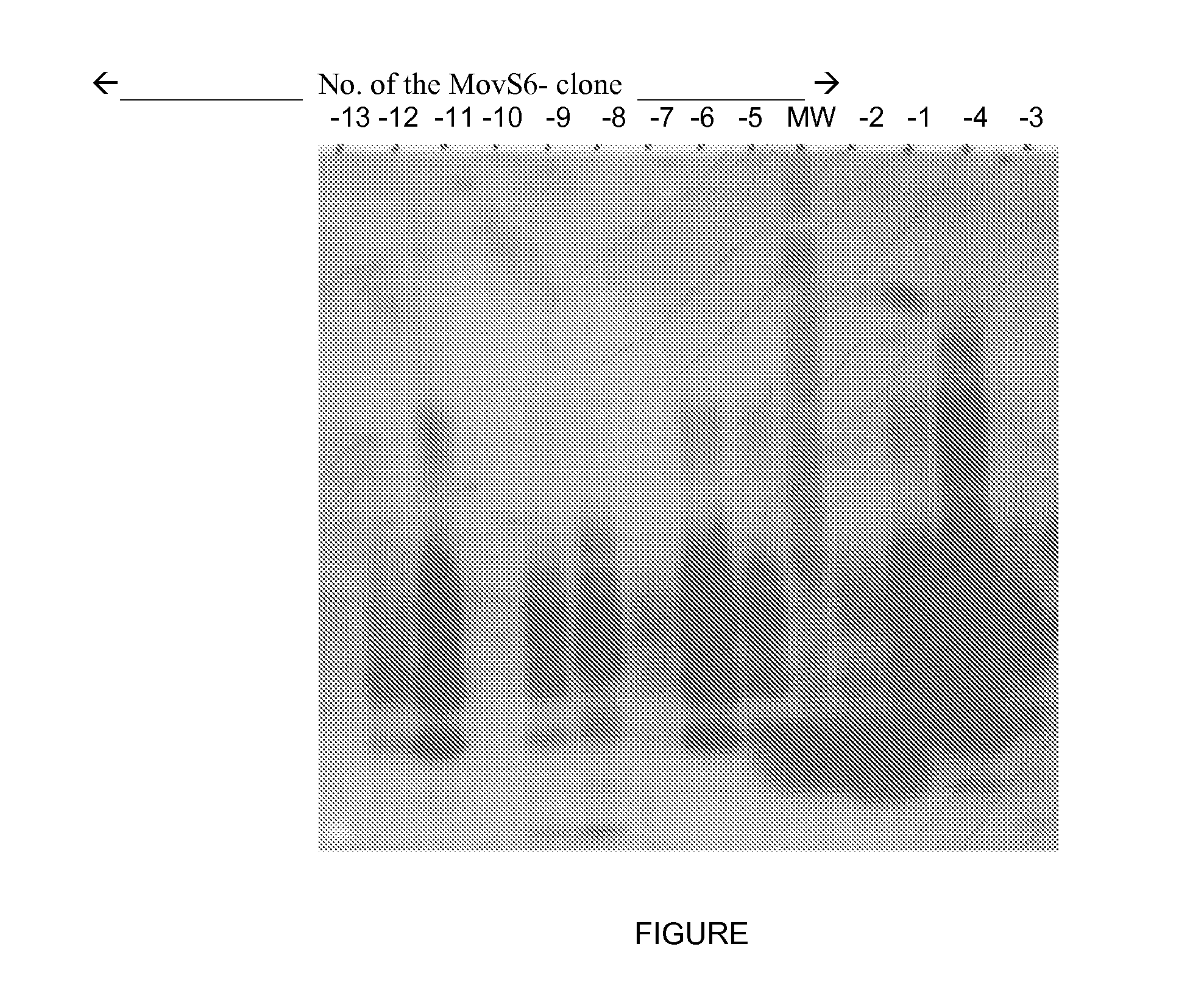Stable clone cell expressing a prion
- Summary
- Abstract
- Description
- Claims
- Application Information
AI Technical Summary
Benefits of technology
Problems solved by technology
Method used
Image
Examples
examples
[0131]Materials and Methods
[0132]1° Cells and Infectious Material:
[0133]MovS6 cells (Archer F. et al. 2004) were selected as cells which tolerate the replication of NCTAs, and the 127-S scrapie strain adapted to Tg301 transgenic mice was used as natural infectiousness source (Vilotte J L et al. 2001). The cells were cultured in DMEM / Ham F-12 (3:1) medium supplemented with glutamine (2 mM final concentration) and foetal calf serum (5% final concentration).
[0134]The initial infectiousness source consisted of a homogenate of brains from infected mice at 200 mg / ml (batch: LN-3326 at the titre of 6.17 log10 uWB / ml).
[0135]2° Culture:
[0136]The MovS6 cells were cultured in order to constitute, after 15 days of incubation, 2 primary banks (coded: LC-19 and LC-21). An aliquot of LC-19 was thawed and cultured for 3 passages in order to constitute 3 secondary banks, coded: LC-46, LC-47 and LC-48. An aliquot of LC-46 was thawed and cultured for 2 passages in order to constitute a tertiary bank c...
PUM
 Login to View More
Login to View More Abstract
Description
Claims
Application Information
 Login to View More
Login to View More - R&D
- Intellectual Property
- Life Sciences
- Materials
- Tech Scout
- Unparalleled Data Quality
- Higher Quality Content
- 60% Fewer Hallucinations
Browse by: Latest US Patents, China's latest patents, Technical Efficacy Thesaurus, Application Domain, Technology Topic, Popular Technical Reports.
© 2025 PatSnap. All rights reserved.Legal|Privacy policy|Modern Slavery Act Transparency Statement|Sitemap|About US| Contact US: help@patsnap.com

